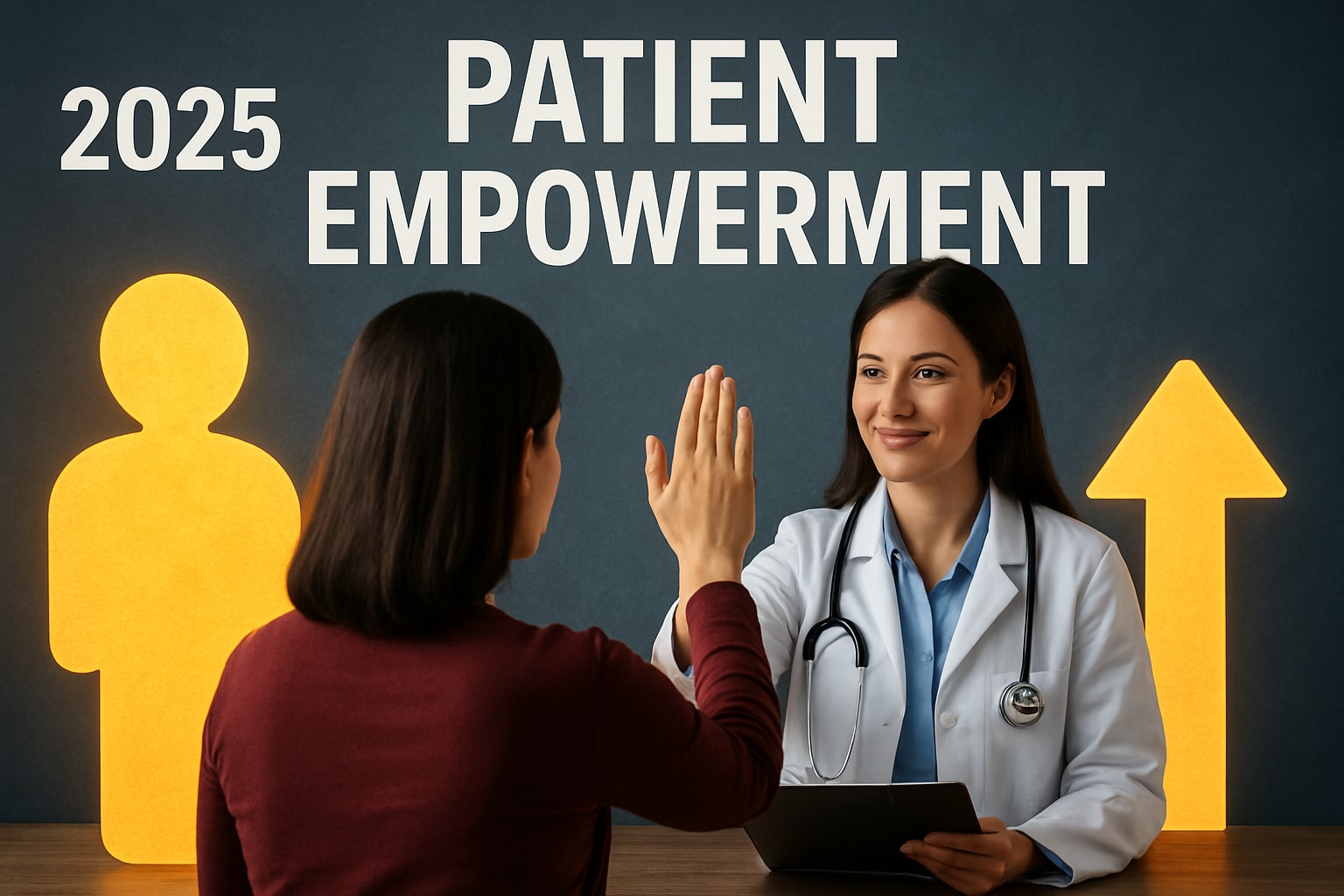In 2025, patients expect more from their healthcare providers as technology evolves and standards rise. The landscape is changing quickly, and healthcare organizations must keep up with new demands.
This essential guide offers proven strategies and the latest innovations for improving patient care. You will find actionable steps, from integrating technology to engaging patients and developing your workforce.
Discover practical, evidence-based solutions that lead to safer and more effective care. Start implementing these strategies today to transform your approach and achieve measurable results.
Understanding the Evolving Landscape of Patient Care in 2025
Patient care is rapidly transforming as we enter 2025. Healthcare organizations face a dynamic environment that demands innovation, adaptability, and a renewed focus on improving patient care. Navigating this changing landscape requires understanding the influential trends and recognizing the challenges that shape daily practice.

Major Healthcare Trends Shaping 2025
Several significant trends are redefining how providers approach improving patient care in 2025. The widespread adoption of digital health solutions, including telemedicine and remote patient monitoring, has enabled care to extend beyond traditional clinical settings. These advances allow for timely interventions and ongoing management, especially for patients with chronic conditions.
Population aging is accelerating, leading to a higher prevalence of chronic diseases and greater demand for coordinated long-term care. Value-based care models are gaining prominence, tying reimbursement to patient outcomes rather than service volume. This shift drives providers to focus on quality, efficiency, and patient satisfaction.
There is also a growing emphasis on integrating social determinants of health into care planning. Factors such as housing, nutrition, and community support now play a central role in treatment strategies. Personalized medicine is advancing, with tailored therapies and patient-centric care plans becoming standard.
Healthcare regulations continue to evolve, influenced by lessons from recent global health crises. The legacy of COVID-19 has cemented telehealth as an essential component of care delivery. For example, hospitals are increasingly using AI-powered triage tools to assess symptoms, prioritize cases, and allocate resources effectively.
For a comprehensive overview of these forces, see the Top 10 Healthcare Trends in 2025, which highlights digital innovation, precision medicine, and patient-centered models as central to improving patient care.
Challenges Facing Healthcare Providers
Despite these advancements, providers encounter complex challenges in improving patient care. Workforce shortages are a pressing concern, with clinician burnout rates on the rise. According to recent studies, more than 60% of healthcare professionals report symptoms of burnout, driven by increased workloads and emotional stress.
Rapid technological change introduces interoperability issues, making it difficult to share patient data seamlessly across platforms. Ensuring equitable care access remains a challenge, particularly for underserved populations who may lack digital resources or suffer from health disparities.
Maintaining patient safety and quality is critical, especially as organizations operate under resource constraints. Providers must also address data privacy, security, and ethical considerations when adopting new technologies. The accelerated adoption of digital health tools brings both promise and risk, requiring robust safeguards to protect patient information.
Statistics reveal that digital health adoption in clinical settings has doubled in the past five years, yet gaps remain in training and infrastructure. Overcoming these obstacles is essential for improving patient care while ensuring safety, equity, and sustainability.
Step 1: Building a Patient-Centered Care Culture
In 2025, improving patient care requires more than clinical expertise. True excellence means building a culture where every patient feels respected, heard, and involved in their health journey. Patient-centered care is not just a buzzword but a foundational strategy for delivering better outcomes and higher satisfaction.

Defining Patient-Centered Care in 2025
Patient-centered care in 2025 is defined by respect, empathy, and a commitment to shared decision-making. The focus has shifted from a provider-centric approach to a true partnership, where the patient, their family, and caregivers actively participate in every aspect of care planning. This transition is driven by changing expectations, regulatory demands, and the recognition that engaged patients experience better outcomes.
Core principles include:
- Respect for patient values and preferences: Every care plan starts with understanding what matters most to the individual.
- Open, two-way communication: Providers and patients share information transparently, ensuring clarity and trust.
- Empathy at every touchpoint: Clinical teams are trained to listen, validate concerns, and support emotional well-being.
- Inclusion of family and caregivers: Recognizing the vital role of support networks in recovery and long-term health.
The adoption of patient advisory councils within health systems is a practical example of this shift. These groups give patients a structured voice in care policies and service improvements. According to Six Healthcare Trends Providers Should Plan for in 2025, patient-centered approaches are essential for improving patient care as expectations and standards rise.
Strategies for Embedding Patient-Centeredness
To make patient-centered care the norm, organizations must weave its principles into daily practice. This means more than training; it requires ongoing commitment and systems that support these values.
Effective strategies include:
- Cultural competence and empathy training: Staff learn to recognize and address diverse needs and backgrounds.
- Actively seeking patient feedback: Surveys, focus groups, and real-time input drive continuous improvement.
- Designing comforting care environments: Spaces that prioritize privacy, dignity, and accessibility enhance patient experiences.
- Incorporating preferences into treatment plans: Care is tailored to each patient's goals, lifestyle, and beliefs.
- Transparent communication channels: Patients are kept informed and encouraged to ask questions at every stage.
Evidence shows that patient-centered models lead to higher satisfaction, fewer adverse events, and better adherence to treatment. These outcomes are central to improving patient care, as they reflect both clinical success and the human experience. By integrating patient perspectives, health systems can address gaps and foster trust.
Overcoming Barriers to Patient-Centered Care
Despite its benefits, embedding patient-centered care presents real challenges. Systemic obstacles such as time constraints, documentation demands, and rigid workflows can hinder progress. Staff may resist change, especially when pressured by competing priorities or unfamiliar processes.
To overcome these barriers:
- Identify and address workflow issues: Streamline processes to free up time for meaningful patient interaction.
- Support staff through change: Leadership must champion the vision, provide resources, and recognize early adopters.
- Leverage patient stories: Sharing real-world successes inspires teams and highlights the value of partnership.
Consider the case of a hospital that reduced readmissions by involving patients and families in discharge planning. This approach not only improved outcomes but also empowered patients to manage their health confidently. Leadership commitment, combined with practical tools, ensures that improving patient care through a patient-centered culture is sustainable and measurable.
Step 2: Leveraging Technology and Innovation for Better Outcomes
Technology is rapidly reshaping the landscape of healthcare, becoming a cornerstone for improving patient care in 2025. Innovations in digital health, artificial intelligence, electronic records, and personalized medicine are transforming how providers deliver safer, more effective, and more efficient care.
Healthcare organizations that embrace these advancements are better positioned to meet rising patient expectations and deliver measurable results.

Digital Health Tools and Telemedicine
The adoption of digital health tools has accelerated, fundamentally changing the patient-provider relationship. Telemedicine platforms now allow patients to access care remotely, breaking down geographic barriers and reducing wait times. Remote patient monitoring devices, such as wearable sensors and home-based diagnostic kits, collect real-time health data for chronic disease management.
Mobile health apps empower patients to track symptoms, medication adherence, and vital signs from anywhere. For example, some hospital systems report significant reductions in emergency room visits by using telemonitoring programs that alert clinicians to early warning signs.
These technologies are vital for improving patient care by making healthcare more accessible, proactive, and personalized. As digital solutions become more integrated, they support timely interventions and better health outcomes for diverse populations.
Artificial Intelligence and Data Analytics
Artificial intelligence (AI) is revolutionizing diagnostics and care delivery. AI-powered tools analyze vast amounts of clinical data, helping providers identify patterns and predict patient risks. For instance, predictive analytics can flag individuals at higher risk for complications, enabling earlier interventions.
Natural language processing streamlines clinical documentation, reducing administrative burdens and freeing up more time for direct patient interaction. Adoption rates of AI in clinical settings are growing, with many organizations seeing improved diagnostic accuracy and workflow efficiency.
According to Health Care Industry Trends to Watch in 2025, integrating AI and data analytics is a key driver for improving patient care by supporting evidence-based decisions and enhancing safety.
Electronic Health Records (EHR) Optimization
Optimizing electronic health records is essential for improving patient care and operational efficiency. Interoperable EHR systems enable seamless data sharing across providers, supporting coordinated care and reducing duplication of services.
Reducing administrative burdens through streamlined workflows allows clinicians to focus more on patients and less on paperwork. Ensuring robust patient data privacy and compliance with regulations is non-negotiable as data sharing expands.
Organizations that have achieved seamless EHR integration report fewer medical errors, improved care transitions, and higher patient satisfaction. These advances are critical for a future-ready healthcare system.
Personalized Medicine and Genomics
Personalized medicine is moving from concept to clinical reality in 2025. By using genetic profiles, providers can tailor treatments to individual patients, increasing effectiveness and minimizing adverse effects.
Pharmacogenomics guides medication selection and dosing, reducing trial-and-error prescribing. Integrating precision medicine into routine care means that therapies are better matched to a patient’s unique needs, leading to improved outcomes.
The rise of genomics is a pivotal force in improving patient care, as it enables targeted interventions and supports the shift toward truly patient-centric healthcare.
Barriers and Solutions for Technology Adoption
Despite the promise of technology, several barriers can hinder its impact on improving patient care. High implementation costs and the need for ongoing staff training are common challenges. Digital literacy gaps among both patients and providers may limit the effectiveness of new tools.
To address these issues, healthcare organizations invest in comprehensive training programs and offer technical support to patients. Ensuring equitable access to technology is also essential, particularly for underserved populations.
By proactively tackling these barriers, providers can maximize the benefits of innovation and ensure that every patient experiences the full potential of modern healthcare.
Step 3: Empowering Patients Through Education and Engagement
Empowering patients is essential for improving patient care. In 2025, patient education and engagement are at the forefront of safer, more effective care. By fostering health literacy, involving families, and addressing disparities, healthcare providers can build trust and drive better results.

The Role of Health Literacy and Patient Education
Health literacy is the cornerstone of improving patient care. When patients clearly understand their diagnoses and treatment plans, they are more likely to follow instructions and achieve positive outcomes. Accessible health information reduces confusion and empowers individuals to take charge of their health.
Educational programs that focus on medication safety, chronic disease management, and preventive care can reduce errors and hospitalizations. For example, hospitals that invest in patient education see fewer medication mistakes and better recovery rates. Healthcare teams can utilize visual aids, guides, and digital resources to make complex topics easier to grasp. For practical ideas, see the Health Education Poster Guide.
Improving patient care requires a commitment to clear communication and tailored educational strategies.
Strategies for Effective Patient Engagement
Active engagement is a proven strategy for improving patient care. Shared decision-making allows patients to participate in their treatment choices, increasing satisfaction and adherence. Digital tools such as patient portals offer 24/7 access to health records and educational content, promoting self-management.
Clinicians can encourage patients to track symptoms, set health goals, and attend virtual support groups. Interactive apps and telemedicine platforms enable ongoing communication, helping patients feel connected and supported. By integrating these tools, providers foster a sense of partnership and accountability.
Ultimately, effective engagement translates to better health outcomes and a more responsive healthcare system.
Supporting Caregivers and Families
Family members and caregivers are critical allies in improving patient care. They assist with daily management, medication reminders, and emotional support. Providing caregivers with clear instructions and training equips them to handle complex care routines confidently.
Healthcare organizations can offer workshops, helplines, and printed resources to guide caregivers through challenges. Including family input in care planning ensures personalized and realistic strategies. Programs that support caregivers have been shown to reduce hospital readmissions and improve patient satisfaction.
Recognizing and empowering caregivers strengthens the entire care network.
Addressing Health Disparities in Patient Education
Health disparities undermine efforts in improving patient care. Diverse populations face unique barriers such as language differences and limited access to resources. Providing culturally and linguistically appropriate materials ensures all patients receive the information they need.
Targeted outreach, translated guides, and community partnerships can close gaps in understanding and access. Studies reveal that tailored education leads to higher engagement and better outcomes among underserved groups.
By prioritizing equity in education, healthcare providers lay the groundwork for a more just and effective system.
Step 4: Strengthening the Healthcare Workforce for Optimal Care
A strong, well-supported workforce is the foundation for improving patient care in 2025. As healthcare evolves, organizations must address staff shortages, invest in ongoing training, foster safety, and build diverse teams. These steps create a resilient environment where clinicians thrive and patient outcomes improve.
Addressing Workforce Shortages and Burnout
Healthcare faces significant workforce shortages, with many clinicians experiencing burnout due to high patient loads and administrative demands. These challenges threaten efforts focused on improving patient care.
To address this, organizations are adopting flexible staffing models, such as job sharing and telehealth support roles. Wellness and resilience programs are gaining traction, offering mental health resources and stress reduction workshops. For example, hospitals implementing structured resilience training have reported lower staff turnover and enhanced morale. Prioritizing staff well-being is essential for sustaining quality care.
Investing in Training and Professional Development
Continuous learning is central to improving patient care. Healthcare professionals must keep pace with new technologies, treatment protocols, and collaborative care models.
Interdisciplinary team training helps break down silos, while leadership development prepares staff for emerging challenges. Ongoing education in digital health and integrated care improves adaptability. For more on how integrated care strategies support workforce growth, see Integrated Healthcare Strategies. Organizations that invest in professional development empower teams to deliver safer, more effective care.
Fostering a Culture of Safety and Accountability
A culture of safety is vital for improving patient care. Open communication about errors and near-misses encourages learning and prevents repeat incidents.
Hospitals are implementing safety checklists, regular debriefings, and anonymous reporting tools. Engaged staff are more likely to speak up, share concerns, and adopt best practices. Evidence shows that workforce engagement directly links to better patient outcomes. By prioritizing safety and accountability, healthcare leaders create trust and drive continuous improvement.
Diversity, Equity, and Inclusion Initiatives
Diverse teams play a key role in improving patient care. Recruiting and retaining staff from different backgrounds brings varied perspectives and fosters innovation.
Training in cultural competence and addressing implicit bias ensures that care is respectful and equitable for all patients. Studies demonstrate that diverse healthcare teams lead to higher patient satisfaction and better care quality. Embracing diversity, equity, and inclusion is not just a value but a measurable strategy for advancing care outcomes.
Step 5: Measuring, Evaluating, and Sustaining Quality Improvement
Tracking progress is essential for improving patient care in 2025. Healthcare teams need clear metrics and robust evaluation systems to ensure every initiative leads to safer, higher-quality outcomes. With rising expectations and evolving standards, organizations must measure what matters most.
Key Quality and Safety Metrics in 2025
Choosing the right metrics is the foundation for improving patient care. In 2025, organizations focus on:
- Patient satisfaction and experience scores
- Clinical outcomes like readmission and infection rates
- Adherence to evidence-based guidelines
- Process indicators such as timely follow-ups and medication accuracy
Real-time analytics dashboards offer instant feedback, making it easier to spot trends and act quickly. According to What to Expect in US Healthcare in 2025 and Beyond, these tools will be critical for adapting to value-based care models and regulatory demands.
Implementing Continuous Quality Improvement (CQI) Programs
Continuous Quality Improvement empowers teams to make incremental gains in patient safety and outcomes. Core CQI steps include:
- Root cause analysis to uncover why issues occur
- Engaging frontline staff in identifying solutions
- Regular feedback loops using performance data
By embedding CQI into daily routines, staff become invested in improving patient care. Successful organizations use frameworks like Plan-Do-Study-Act cycles to test changes, measure results, and refine processes. This approach ensures improvements are evidence-based and sustainable.
Benchmarking and Accreditation
Comparing performance against national and international standards helps organizations set realistic targets for improving patient care. Benchmarking involves:
- Reviewing clinical and experience metrics alongside industry peers
- Preparing for regulatory reviews and accreditation processes
- Using scorecards and external audits to identify gaps
Achieving recognitions such as Magnet status signals a commitment to excellence. Regular benchmarking drives accountability, encourages transparency, and motivates teams to reach higher standards.
Sustaining Change and Spreading Best Practices
Sustaining momentum after initial improvements is vital for ongoing success. Strategies include:
- Sharing success stories and lessons learned across departments
- Establishing communities of practice to champion innovations
- Regularly updating protocols to reflect new evidence
Access to resources like the Patient Care Resources Collection helps teams stay informed about best practices and emerging strategies for improving patient care. Continuous education and open communication foster a culture where quality improvement becomes part of daily operations.






